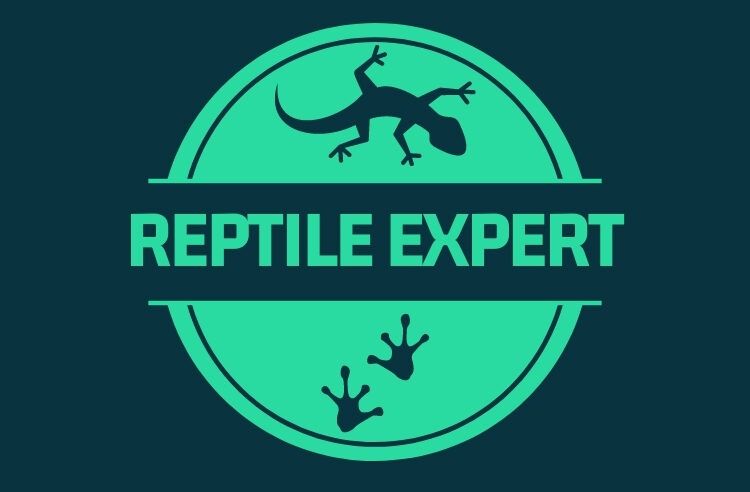Keeping your reptile healthy is one of the key duties of a reptile owner and it can also be one of the most challenging. Reptile health depends on a wide variety of factors all of which must be satisfied for the reptile to be free from stress and illness. As these factors can be very species-specific, it is essential that every reptile owner has thoroughly researched his chosen species and is familiar with its needs and habits, as well as the diseases it is prone to. This is particularly important in the artificial environment of captivity. For example, anyone keeping boas and pythons should know how to recognise and deal with inclusion body disease, a viral illness that can be rapidly fatal if not treated.
For all reptiles, health depends on satisfaction in the following areas:
- Size and orientation of enclosure
- Correct temperature gradients and sufficient heating, plus a basking spot
- Humidity levels suitable to the species
- Proper diet for the species (appropriate size is also a consideration)
- Substrate type and depth (must be both suitable and safe)
- Correct day/night cycles through proper lighting (e.g. full spectrum UV light source)
- Proper cleaning and disinfecting of enclosure, substrate and furnishings
- Availability of fresh water, with consideration to reptile use (e.g. bathing and soaking)
- Features of interest within the enclosure, relative to species needs (e.g. hiding spots, logs, rocks, plants, humidity retreats, body of water)
- Good knowledge of normal species behaviour to help with early detection of stress and ill-health
- Good enclosure and equipment maintenance
- An experienced reptile veterinarian to provide advice and appropriate treatment
- Regular monitoring of all the above factors
What Does a Healthy Reptile Look Like?
To know if your reptile is sick, it’s vital that you know what is normal condition and behaviour. While no reptile is completely free from parasites, just as in humans, a healthy individual’s immune system will keep any serious infections at bay. A healthy reptile will have a well-rounded body that is fleshed out nicely and very few of the lateral folds normally associated with dehydration. Its skin should be shiny and smooth and its natural colour should be strong and clear, not dull or unusually dark. The animal should be alert and behaving according to its species; it should show signs of correct thermoregulation during the course of the day and night and of course, feeding, drinking and defecating according to its natural cycle. Most healthy reptiles will also shed regularly, usually every 4-6 weeks, and this may coincide with greater or lesser appetite and also the tendency to breed.
Problems to Look Out For
Aside from making sure that the reptile is meeting the conditions described above, it is important to regularly check for physical signs of injury or illness. These include:
- Limping, difficulty raising body off the ground or climbing
- Shaking and tremors; loss of muscle tone
- Swelling anywhere in the body (e.g. tail, limb, back, jaw, digit)
- Blisters and scabs; lumps, bumps or bruised areas
- Difficulty defecating
- Drooling and thickened saliva
- Pale mouth or long periods of gaping (sitting with open mouth)
In addition, if you are keeping more than one reptile together (but always the same species) it is important to monitor the social environment as well as the physical one. This is because even if there is no overt dominance or aggression – and no actual fighting observed – there could still be subtle bullying which can result in the weaker animal being restricted from food and basking areas, leading to slow death from stress-induced hypothermia and starvation.
Sometimes, if both the physical and social environment are satisfactory and there still seems to be a problem, it is worth looking beyond the enclosure, to the area it is situated in. For example, is it in a very noisy room with serious disturbance from children and other pets, which might be regarded as predators? (e.g. cats and dogs). Has there been a major disruption of the reptile’s normal schedules and lighting, temperature or humidity levels, due to events like moving house, going on holiday or long-term visitors?
Changes in Behaviour
Changes in behaviour can also indicate stress and illness. Things to look out for include lethargy; loss of appetite, spending more time in hiding spots, at the cooler end of the temperature gradient or under basking spots; prolonged soaking in the water dish; increased activity at unusual times; unusual repetitive behaviours such as digging, scratching or head-banging and changes in tongue-flicking frequency, especially during handling.
However, the reptile may not always become lethargic and refusing to feed. In some cases, ill-health and stress can cause the reptile to become irritable or even aggressive. Thus, if your usually tame reptile becomes suddenly aggressive and it is not a breeding-associated trait, it is appropriate to be suspicious. All too often, especially with males, this is discounted as “typical aggression” but in many cases, unexplained changes in behaviour point to an underlying physical problem. Just like in humans, individuals that are feeling stressed and unwell may become cranky and snappy and react abnormally to normal interaction and stimuli.
Remember…
It does not have to be a major deficiency or shock to cause problems – small changes or slow, insidious stress over time can gradually lead to serious health issues and problems. Furthermore, keep in mind that most reptiles bought from pet stores will already be “unhealthy” and suffering from heavy parasite-load and stress of transport (not to mention capture, if wild-caught). This is why it is really important to always buy from reputable reptile breeders producing captive-bred stock.
